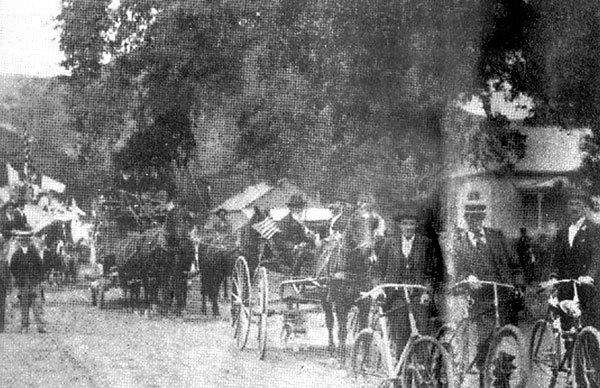The South Valley is losing open space to growth and development.
Orchards meet neighborhoods, and once-rural areas are pegged as
future building sites. Take a look at the changes in your
community.
Hollister
“Hollister has grown, but we do have a cease-and-desist order for handing out building permits. Hollister has grown. Until the last few years, we were growing faster than Gilroy, which was the source of a lot of our problems. It’s not a good thing that we can’t build. It doesn’t allow for commercial and industrial development. Commercial and industrial businesses aren’t thrilled to come here if there isn’t development to allow for housing their employees. Fixing our problems to allow development is the number one priority of the community, as identified by our elected officials. We’ve adopted general plans for a specified growth level, for appropriately managed, controlled growth.”
–Clint Quilter, Hollister City Manager
The building moratorium stems from an incident in 2002 in which 15 million gallons of treated sewage spilled into the San Benito River. The sewage system proved inadequate to accommodate Hollister’s quickly growing demands. The Central Coast Regional Water Quality Control Board immediately put a moratorium on new sewer hook-ups.
Gilroy
“Growth is inevitable, and I wouldn’t characterize it as good or bad. It’s difficult for people who have lived in a community for a long time to accept sometimes, and change is often difficult. Issues associated (with expansion) will continue. We’re having some growing pains: traffic, congestion, air quality. The idea in planning is to minimize these impacts, but they are inevitable. Gilroy has doubled in size since I started working here 15 years ago. Gilroy isn’t just a sleepy little town anymore. We’re a regional shopping area. We benefit from tax revenue generated by people coming from all over to shop here. We’re benefiting financially from these people, but they aren’t putting demands on the city in terms of fire service, housing or school services. But the nature of a condensed commercial area like that means we have to accept the trade-off, which is San Jose-type traffic congestion.”
–Melissa Durkin, planner for City of Gilroy Planning Division
In a past Gilroy Dispatch reader poll, 48 percent of respondents were undecided about Day Road being the best location for a new high school and 44 percent felt Day Road was the best location.
Morgan Hill
“South Santa Clara County is quite different from the rest of the county in that it retains a lot of rural character, and we have community separators between Morgan Hill and San Martin and between San Martin and Gilroy. I think a lot of residents want to keep it that way. More than 1 million people are expected to move to the Bay Area by 2020, so we need to think differently about development patterns. We need to build higher instead of sprawling out into surrounding farm lands. We’re not saying there should be no development at all – it’s going to happen. But we need to use our land more efficiently. We should concentrate on downtown areas, preserve the greenbelt, hillsides and farm lands. These things keep us distinct. Communities to the north of us have pretty much lost the opportunity to preserve these things, and we should learn from their mistakes and make preservation a priority.”
–Michele Beasley, South Bay Field Representative at
Greenbelt Alliance, an environmental advocacy group












